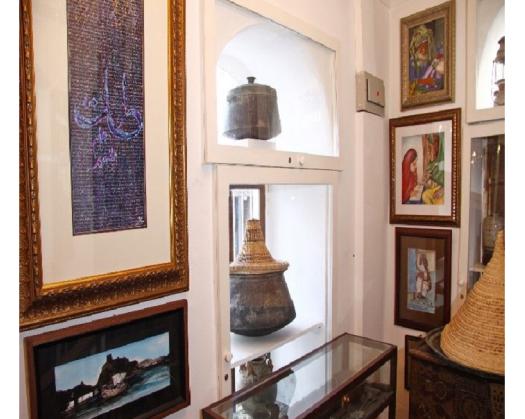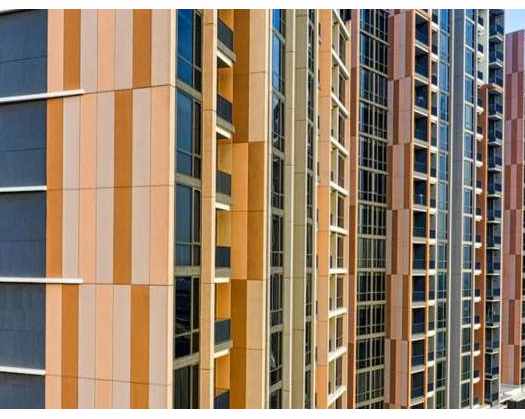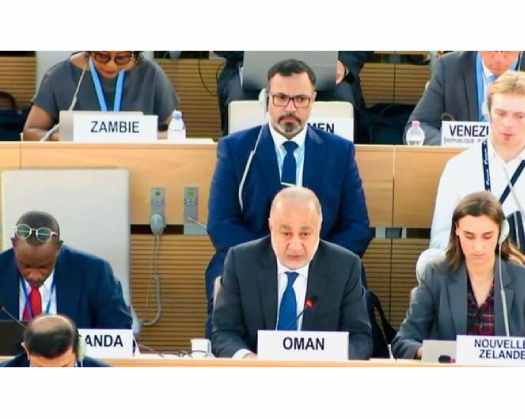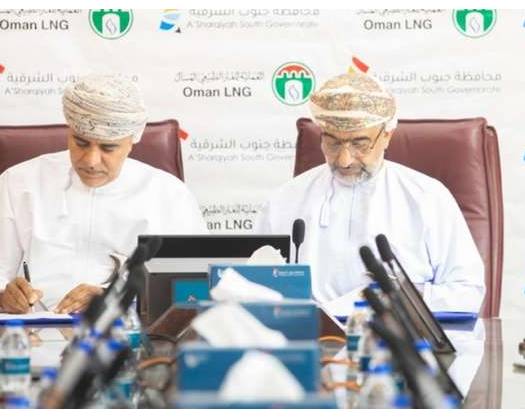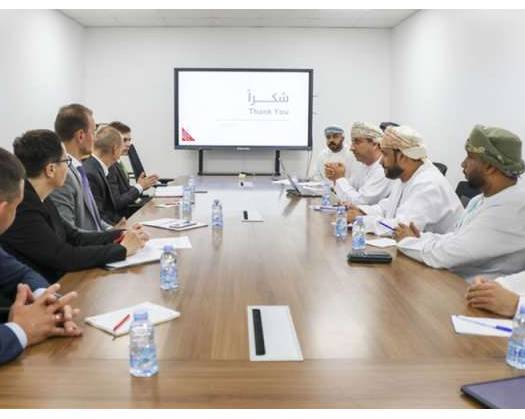Muscat: On Saturday, the Sultanate of Oman, through the Ministry of Heritage and Tourism (MoHT), joined countries worldwide in celebrating International Museum Day. This annual event, observed on May 18, aims to highlight the significant role of museums in education and research.
The focus of this year's celebration is 'Museums for Education and Research,' emphasizing the dynamic nature of museums as educational institutions that foster learning, discovery, awareness, and cultural understanding.
According to statistics provided by the MoHT, Oman currently has a total of 11 government museums and 19 licensed museums and heritage houses. Notably, the Natural History Museum of Oman received 16,957 visitors in 2023, while Fatah Al Khair welcomed 10,790 visitors by the end of the same year. Additionally, the Land of Frankincense Museum recorded a total of 86,079 visitors during the same period.
To commemorate International Museum Day, the MoHT organizes various events, seminars, and training workshops across different governorates of Oman. These activities are conducted in collaboration with the International Museum Day initiative.
Established by the International Council of Museums (ICOM), International Museum Day serves as a global platform to promote cultural exchange and development through museums. Museums worldwide will come together to organize exhibitions, events, and educational programs centered around this year's theme, highlighting the active and valuable role of museums in society.
The International Museum Day has been actively supporting the United Nations Sustainable Development Goals since 2020. This year, the focus will be on promoting inclusive and equitable quality education, fostering industry and innovation, and building resilient and flexible educational infrastructure. Additionally, the aim is to promote sustainable and inclusive industrialization and encourage innovation.
The Ministry of Heritage and Tourism (MoHT) in Oman has reaffirmed its commitment to utilizing museums in the country to enhance knowledge and scientific understanding among researchers and visitors.
Museums are recognized as valuable sources of knowledge that contribute to the achievement of various strategic programs outlined in the 10th Five-Year Development Plan and the "Oman Vision 2040."
Furthermore, museums play a crucial role in preserving cultural heritage, ensuring its sustainability, and creating both direct and indirect employment opportunities. They also contribute to enhancing local content and solidifying their position as popular tourist destinations. The MoHT is actively involved in several projects aimed at developing and modernizing these destinations.
Oman has long recognized the significance of advancing museums, particularly since the Renaissance era. This recognition has led to the establishment of numerous archaeological missions across the country, with the goal of uncovering the most significant archaeological treasures in Oman.
The objective is to showcase these treasures within a museum system that aligns with Oman's cultural history and ensures their long-term sustainability through the implementation of best practices.
The Directorate General of Museums, representing the MoHT, is actively involved in various projects aimed at developing the museum system. These projects encompass multiple aspects, such as enhancing the exhibition at the Museum of the Frankincense Land to ensure its sustainability, promoting the growth of local communities to keep up with advancements in the museum field, and presenting heritage in a more captivating manner through improved internal museum content, innovative designs and display methods, interactive tools, and enhanced security systems.
Furthermore, the MoHT is undertaking a project to establish museum exhibition halls in forts and castles, leveraging their historical significance as tourist destinations and acquainting visitors with their rich history and archaeological importance.
In addition to these efforts, the MoHT provides support to museums and private heritage houses that face operational challenges, aiming to enhance their visibility as appealing tourist destinations on the tourism map. This support ensures the preservation of archaeological and historical artifacts within these museums, safeguarding them from potential threats.
Moreover, this initiative seeks to stimulate the job market and empower local communities by actively involving them in the preservation and promotion of cultural heritage.
One of the significant initiatives being implemented by the Directorate General of Museums is the establishment of the Maritime History Museum. This project aligns with the strategic programs outlined in the 10th Five-Year Development Plan for the "Oman Vision 2040."
The goal is to present Omani maritime history by utilizing a variety of artifacts and museum interpretation techniques that showcase the skills and accomplishments of Omanis in maritime navigation, as well as Oman's historical connections with various nations and civilizations.
Furthermore, the project has included the participation of several specialized international expert teams known for their innovative museum practices. Workshops, meetings, and sessions have been arranged with local experts to contribute to the initiative.
The restoration project of the Sohar Fort Museum, which was opened in 1992, is considered one of the most significant development projects during this period.
Its aim is to shed light on the history of Sohar, its historical sites, and its cultural connections with the world, particularly its reputation in trade and maritime activities. The Ministry of Heritage and Tourism is currently working on a plan for the rehabilitation and enhancement of the museum after the completion of the castle's restoration and the upgrade of its various facilities.
Additionally, Oman is home to several museums that house valuable treasures. One notable example is the "Oman Across Ages Museum" in Manah, Ad Dakhiliyah Governorate. This museum narrates Oman's history over 800 million years, documenting human history in the region through reports and scientific research conducted throughout different time periods, culminating in the era of the Omani Renaissance.
The Oman National Museum is a prominent cultural landmark in the Sultanate of Oman, dedicated to showcasing the rich cultural heritage of the country.
Established through Royal Decree No. (62/2013) on November 20, 2013, the museum has a profound mission to educate, promote culture, and foster a sense of belonging among citizens, residents, and visitors. It aims to instill noble Omani values and raise public awareness about Oman's history, heritage, and culture.
The museum offers a captivating exhibition experience across 14 galleries, featuring a carefully curated collection of over 7,000 artifacts and 33 interactive digital display systems.
In addition, the National Museum boasts a state-of-the-art learning center, preservation and preventive conservation facilities, fully equipped laboratories, an audiovisual presentation hall with UHD technology, and an innovative open storage system. Notably, it is the first museum in the Middle East to incorporate a Braille system in the Arabic language.
Another remarkable museum, the Museum of the Frankincense Land, is situated in the Al Baleed Archaeological Park in Salalah. It officially opened its doors on July 23, 2007.
The museum currently offers a comprehensive overview of Oman's rich history across different time periods. It consists of two exhibition halls, namely the Maritime Hall and the History Hall. Within these halls, visitors can explore a wide range of archaeological discoveries, ship models, forts, castles, watchtowers, drawings, images, paintings, manuscripts, multimedia displays, and films.
To further enhance the museum system, the Ministry of Heritage and Tourism (MoHT) has initiated a project to revitalize the museum's displays and implement best practices in the field. This endeavor aims to present the museum in a fresh and captivating manner, ultimately contributing to the preservation and promotion of its historical and cultural significance.
In the Wilayat of Sur, the recently inaugurated Fatah Al Khair serves as a testament to Omani cultural heritage and maritime history. This establishment plays a crucial role in raising public awareness among both visitors and residents, shedding light on the components and importance of Sur's maritime heritage. Additionally, Fatah Al Khair showcases various shipbuilding tools and ship parts, offering insights into the remarkable history and voyages of the Fatah Al Khair ship.
The Natural History Museum of Oman holds great significance as one of the country's most important museums. It houses exhibits that represent diverse aspects of life since the Sultanate of Oman's inception. Among the remarkable artifacts on display are remnants of a fossilized tree discovered in the Al Haqf area, dating back over 260 million years. Additionally, visitors can marvel at fossilized coral remnants from Wadi Al-Sahtan in the Wilayat of Rustaq, which date back approximately 270 million years.
In addition, the museum showcases remnants of teeth from a primate species, as well as various reptiles, beautiful butterfly species, and other creatures that inhabit the deserts of Oman. It also houses numerous remnants of trees and fossilized bones.
Situated near the Qasr Al Alam Palace in Muscat, the Omani and French Museum is located in a historic house that is over 170 years old.
Sultan Sayyid Faisal bin Turki had a strong affinity for France and, in 1896, generously donated a palace in Muscat to serve as the French consulate's headquarters.
The museum comprises seven halls that exhibit a range of items, including historical documents that commemorate the trade relations between the Sultanate of Oman and the French Republic. It also houses a valuable collection of postage stamps, traditional costumes, and jewelry from Omani coastal cities like Muscat, Salalah, Sur, and the wilayats of Al Batinah northern and southern.
Additionally, the museum showcases French attire from Marseille and Lorient, cities that had extensive trade exchanges with Muscat. The Ministry of Heritage and Tourism (MoHT) is currently undertaking a comprehensive program to renovate and maintain the museum, as well as update its exhibitions to preserve the building's authenticity and historical significance.
The Sultan's Armed Forces Museum, which officially opened on December 11, 1988, is located in Bait Al Falaj Fort. The fort was renovated and refurbished during Oman's modern renaissance and serves as a testament to the country's military history from pre-Islamic times to the present era.
The museum showcases a diverse array of military artifacts, from traditional weapons to modern equipment, providing visitors with a comprehensive look into Omani military history. The outdoor exhibition further enhances the experience by displaying a range of military vehicles, tanks, aircraft, and ships once utilized by the Sultan's Armed Forces.

